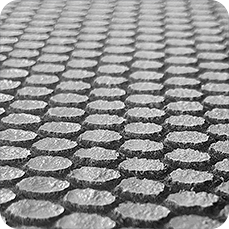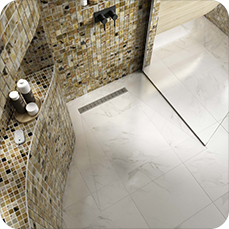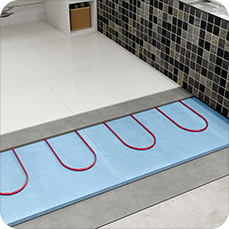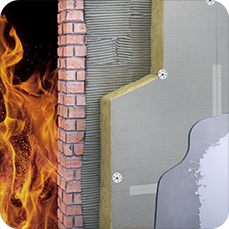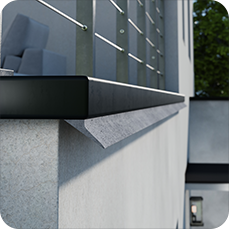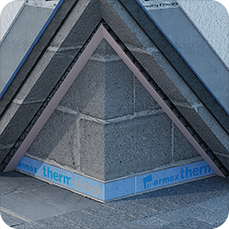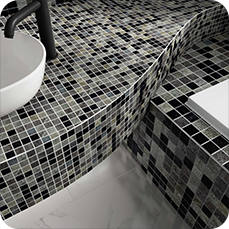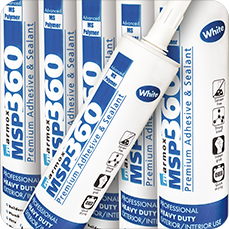-
How to install a wet room

How do I protect the rest of my home from damp?
Equipping yourself with the right wet room shower kit can help to ensure moisture and damp doesn't leak into other areas and affect the structure of your home.
Insulation systems such as Marmox Multiboard can be used for waterproofing, dry-lining and to provide thermal insulation, while effective wet room gully and drainage systems protect against leaks and damp.Is waterproofing insulation available in different shapes and sizes?
Yes, Marmox Multiboard comes in flexible and curved varieties, and pipe boxing is also available.
Can I choose how to decorate my wet room?
Absolutely. Wet room waterproof insulation systems are used to line floors, walls and ceilings but also provide a surface for easy tiling, plastering or other finishes.
Wet room shower trays can be decorated with a range of finishing materials, with the Showerlay system able to accommodate mosaic tiles as small as 50mm.Can I put down wet room flooring on concrete?
Yes, wet room waterproofing solutions such as Marmox Multiboard and the Showerlay custom shower tray can be laid on either concrete or wooden floors.
Are wet room shower kits simple to install?
Yes, there are wet room shower kits available that are specifically designed to be low-cost and easy to install.
-
Marmox Multiboard

What can I use Marmox Multiboard for?
As well as being a lightweight tile backer board, Marmox Multiboard can be used for tile waterproofing and dry-lining, and to provide thermal insulation. It creates a decoupling membrane to stop tiles and grout from cracking.
Marmox Multiboard is completely impermeable to water and can be used to protect walls and floors in bathrooms and kitchens.
Can I place Marmox Multiboard under carpet?
Yes, just place a thin (10mm) sheet of ply or a fibre-reinforced flooring compound over the top of the boards before the carpet is laid down.
Which way up do the boards go?
It doesn't matter; both sides of the board are the same.
Is one side of the board waterproof?
No, unlike some other boards, it is the core of the board itself that is waterproof.
Can I tile onto the boards or do I have to prime them?
The Marmox material is ready to tile; you don't need to do anything to it.
How many boards do I need?
Small boards are 0.6m x 1.25m - that's three quarters of a square metre so you need to divide the area you want by three quarters and that's the number of 'short boards' you require.
Can I put the boards directly onto floor joists?
No, although the boards can take a weight of over 40 tonnes over per square metre, they can be distorted by the point load pressure of sitting on a joist.
What adhesive should be used?
Use tile adhesive; the powder version rather than pre-mixed version. So that it’s the correct strength for the tiles, this will usually be the same product you will be using to fix the tiles with.
Normal tile adhesive (C1 type) can be used on walls for light to medium weight tiles and for plastering but for heavier tiles, for external use, on floors and in wet areas, a ‘flexible’ version should be used; this is categorised as “C2” (or C2F) type.
Can plasterboard dot and dab adhesive be used?
No, a cement-based tile adhesive is needed.
Besides tile adhesive, can other adhesives be used?
When necessary, solvent-free versions of grab adhesives will work but using these non-standard adhesives may reduce the board’s hanging weight as these alternative methods have not been tested. Please always check with the adhesive manufacturer for their recommendations.
How do I stick Parquet flooring to Marmox?
Only non-solvent, non-water based adhesives (such as BAL Stopgap) can be used. This is because Parquet flooring is usually stuck down with solvent-based adhesive which must not be used with Marmox boards - Marmox boards are usually stuck down with a water-based tile adhesive, which must not be used with Parquet flooring.
What thickness board is sufficient to make a difference to heat loss?
To meet current building regulations very thick layers are required (phone us to calculate this if necessary), however, if at least a 20mm thick Marmox Multiboard is used to insulate a wall it will make a noticeable reduction to the heat loss.
How many washers are needed?
Without using any adhesive, a short board will need two rows of five (10) or if the board is 12.5mm or 10mm thick, three rows of four (12). A long board will require 15 fixings; three rows of five.
Used with adhesive (the dot and dab method), five fixings per short board and nine fixings per long are recommended.
On floors, the tile adhesive method should be used whenever possible. If the only practical option is mechanical fixing, screws and washers should be used every 30cm – that is 15 per short board.
Can I plaster onto Marmox Multiboard?
Yes, the surface of the boards contains additives to reduce the porosity and stop the possible formation of ettringite salts which can sometimes occur when a gypsum plaster is applied to a concrete surface. The boards therefore do not need to be primed.
Can the boards be placed above underfloor heating systems ?
No, the boards are insulation boards therefore they should go below underfloor heating systems to avoid blocking the heat.
What is the maximum weight of tiling that Marmox boards can hold?
The unique surface structure and patented bonding of the surface to the foam core allows Marmox boards to carry much heavier tiles than other types of tile backer board. When the board is fixed to a masonry wall with a continuous bed of tile adhesive, tile weights comfortably exceed 100kg/m². All Marmox boards from 4mm to 60mm have the same maximum “hanging weight.”
How long are Marmox products guaranteed for?
Marmox boards and shower formers have a lifetime guarantee.
Do the boards contain anything harmful to me or to the environment?
No, all Marmox products conform to current EU legislation which means they are free of chemicals and materials which have been found in some cheap imported boards. Our boards are free of asbestos, ozone-destroying CFC and HCFC and the potential carcinogenic fire retardant HBCD.
-
Marmox Showerlay

Can I choose the shower tray drain grate?
The Showerlay is designed to fit just the one drain system supplied. Both the linear and point drain versions come with brushed stainless steel.
Can the Showerlay be trimmed to fit?
Yes, because the gradient is constant from the outside edge to the drain, cutting off some of the drain off area will still mean that what is retained is still sloped. To retain symmetry, it is advisable to cut equal amounts of each side (e.g. 7cm off the two opposite sides rather than 14cm off one side). The trimmed side will provide less run-off therefore must always be placed against the wall to efficient drainage.
How much can be trimmed and which parts can be trimmed will vary which Showerlay size is being used and from application to application so please call Marmox for advice.
Is a Showerlay waterproof?
Like Marmox Multiboard, the Showerlay has a core of extruded polystyrene. It is impossible for moisture to pass through this. The drain frame is fitted in the factory which also guarantees that water will not be able to pass through this product. The only places water can penetrate is at the edges where the Showerlay meets the wall or the rest of the floor – these joints must be waterproofed with waterproof tape or similar.
Does the Showerlay need a waterproof membrane or waterproofing primer?
No, the material is 100% waterproof, however, membranes and primers are sometimes useful in covering the joints and if they cover the Showerlay they will do no harm.
Can Showerlay be used on concrete floors?
Yes, the Showerlay can be used in wet room showers on either concrete floors or wooden floors.
Can mosaics be used on Showerlay?
Our instructions say that tiles smaller than 5cm x 5cm should not be used, because very small mosaic tiles do not spread the load and if, for example, a step ladder, a wheelchair or a bath stool press onto a mosaic the point load could distort the Showerlay underneath.
Can non-tile surfaces such as vinyl be used?
No, the shower floor drains (point drain and linear) are designed for use with a tiled finish only.
Can a Showerlay be placed on joists?
No, the normal Showerlay cannot sit directly on joists. It must be supported underneath by a flat surface.
What adhesive should be used?
Use a powder-based ‘flexible’ tile adhesive; these are categorised as C2 or C2F. Alternatively, Showerlays can be fitted using non-solvent grip adhesives such as Marmox MSP360.
-
Marmox Thermoblock

What certification does Thermoblock have?
For the UK, Marmox Thermoblock holds a BBA agrément certificate (10/4778) and for the EU, a European Technical Assessment (20/0744) thereby giving it a DoP and a CE mark.
Can Eurocode 6 be applied to Thermoblock designs?
Marmox Thermoblock is not covered by Eurocode 6, the design strength can therefore not be determined by that method. This is because the product is a non-homogenous “load bearing insulation block” which is not categorised as a masonry unit. Thermoblocks therefore do not have specific criteria to conform to or multiplication strength factors which can be applied. Furthermore, the density of the product cannot be used to determine its suitability – this is done on its performance only.
Can Thermoblock be used in damp and wet locations?
Yes, Marmox Thermoblocks are not affected by water and can be used in the wettest conditions. If laid with some separation between each other, Thermoblocks can even be used to provide drainage channels.
The top and bottom surfaces are low porosity concrete designed be completely unaffected by the presence of water and the core is completely impermeable to moisture. Because water cannot penetrate the block, expansion and contraction of the blocks due to water absorption cannot occur. Water will not affect the dimensions of the Thermoblock or result in any deterioration.
Is a DPM still needed with Thermoblock?
Although when sealed together with MSP360, Marmox Thermoblocks comprise a permanent waterproof barrier, a DPM is still legally required. The DPM can be placed either above or below the Thermoblock layer.
What is Thermoblock’s fire classification?
Marmox Thermoblock is categorised, in common with most insulation products as Euroclass E.
In accordance with EN13501-2, it has 2 hours fire resistance (Warrington Fire) when used in an approved detail. Wherever Thermoblock is used, it must be used in an approved detail - with either an NBS specification or an in-house approved specification (as detailed on this website). Bespoke specifications can of course be used but they should be approved by Marmox at the design stage.
Can Thermoblock be used above 11m / 18m because of their fire classification?
UK and Irish building regulations prohibit the use of Class E materials on the outside of buildings above 11 or 18m. Subject to approval by building control, where the inclusion of a Thermal break block is necessary to meet the building’s thermal bridging requirements such as in balconies, the Fire Safety Regulations do allow them to be used above 11 or 18m.
Can Thermoblock be used in timber frame and SIP walls?
Yes, specifications are shown in the specifications document
Can Thermoblock be used at the base of steel frame walls?
Yes, specifications are shown in the specifications document
Can Thermoblocks be stacked – 2 or 3 layers?
No - they should not be stacked. Because only one layer of Thermoblock is necessary to resolve the thermal bridging, independent testing of compressive and shear strength has only been carried out on one layer of Thermoblock. The resistance to compression if using more than one row of Thermoblock is consequently not determined and not guaranteed.
When used under a load bearing wall or any load-bearing situation, only one course of Thermoblock is approved.
Can Thermoblocks be cut?
Only the lengths can be cut, the minimum length should be no less than the width of the block.
To create right angles at corners and junctions the blocks are simply butted up to each other and the overhang/underhand it cut off to create a flat edge. Because there are no concrete elements within these ‘lips’ this can be done with a hand saw.
To create curves the blocks can be cut at any angle up to 45 degrees.
Can Thermoblocks be laid side by side?
What is on top of the Thermoblock layer must be approximately the same width as the Thermoblock. For example, a 280mm wide timber frame is being used, two rows of 140m wide blocks can be laid alongside each other.
Can Thermoblocks be laid on their side?
No - The columns inside of the Thermoblock need to be stood vertically, therefore laying blocks sideways will not offer the required support for the wall. One of the two textured, polymer cement sides of the block needs to be facing upwards.


